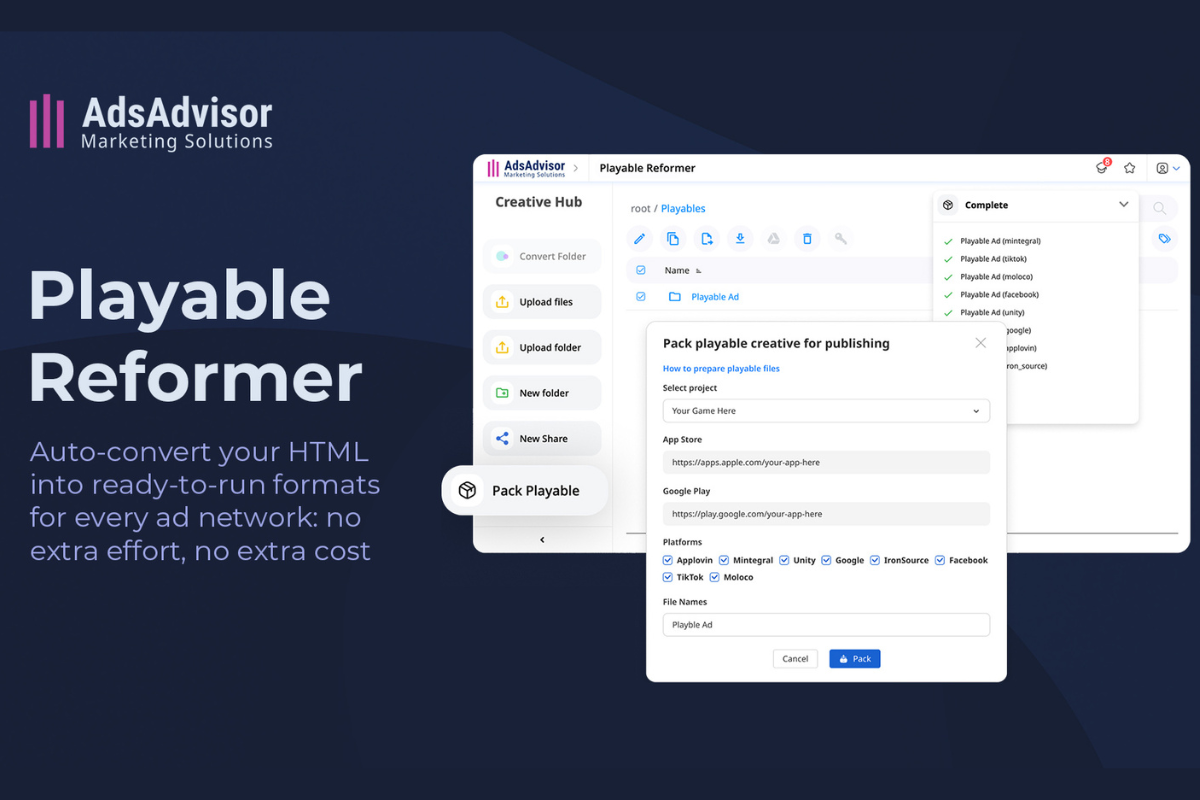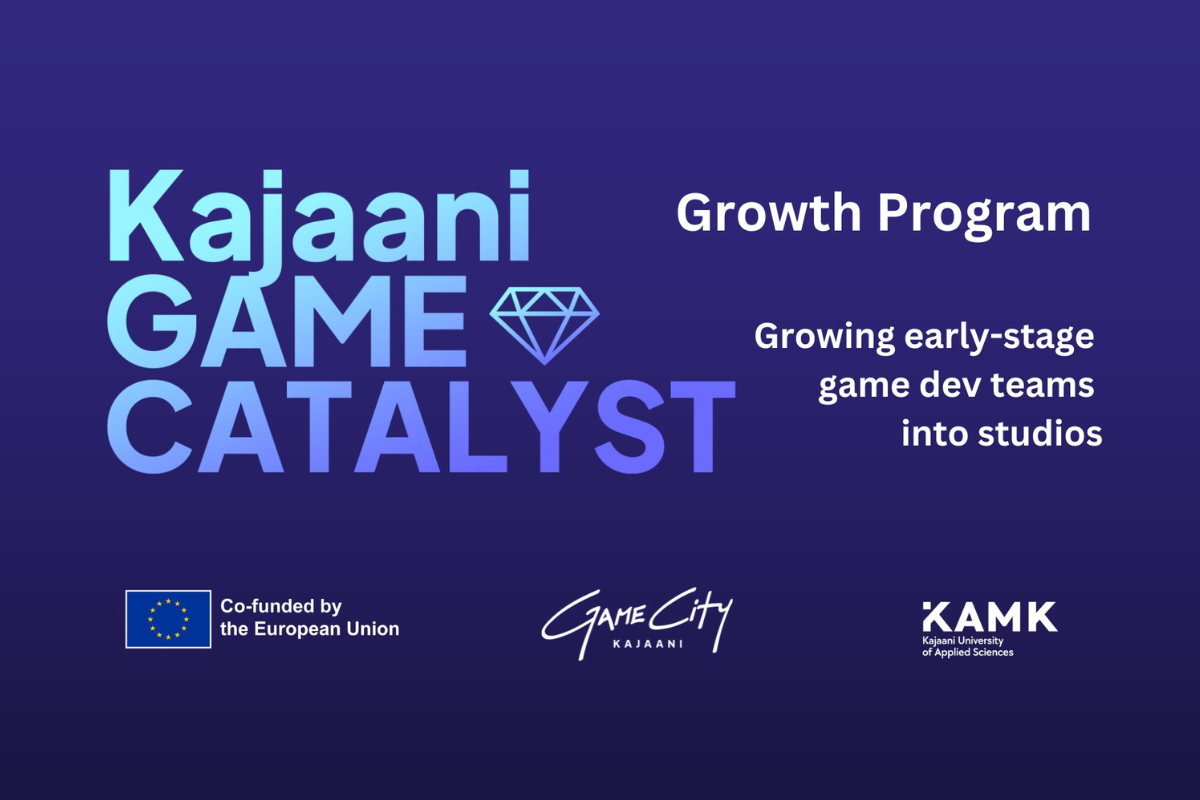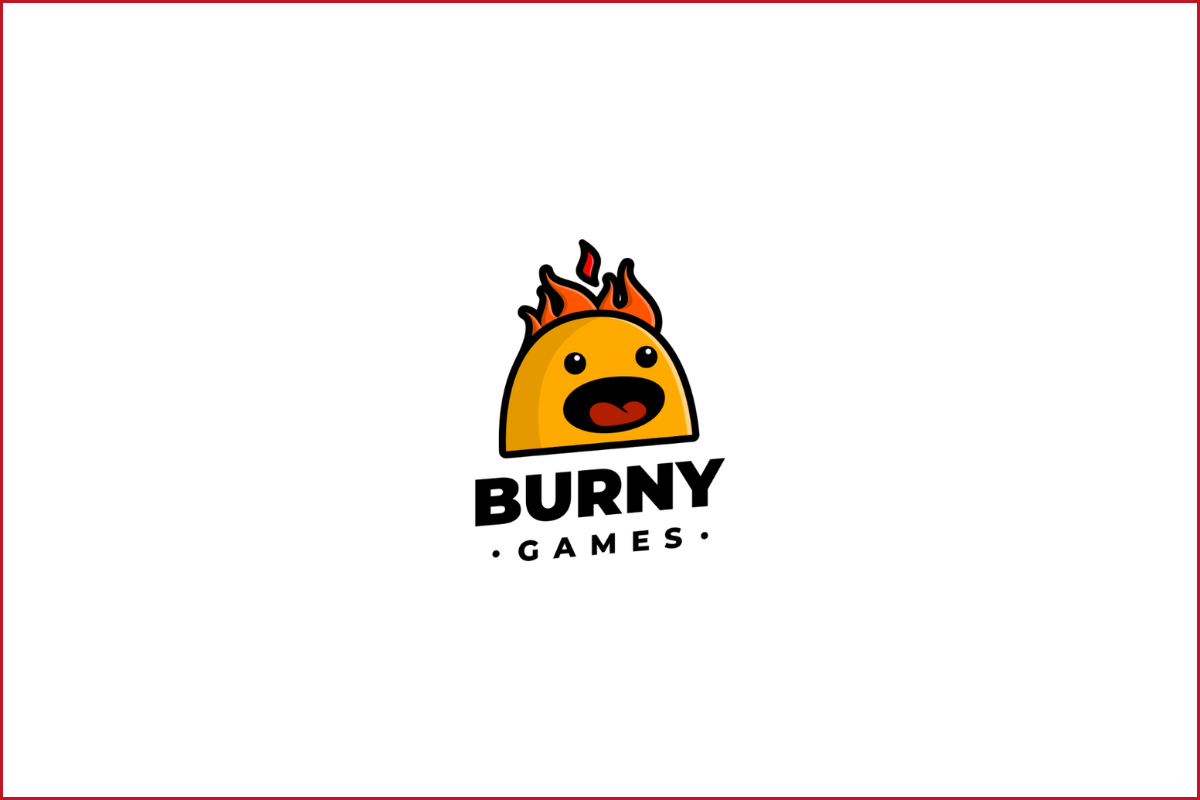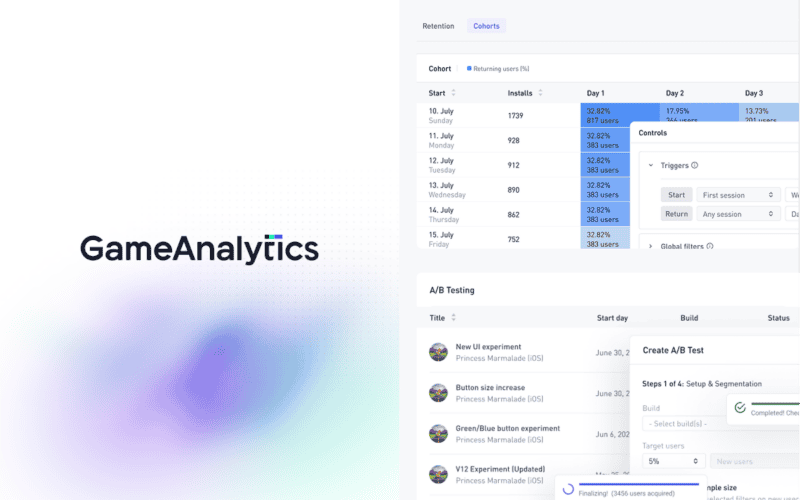Data isn’t just the end of a project. It should be baked into the beginning.
By Tomas Hubka, Marketing Manager at GameAnalytics
Top-ranking studios and game developers already know that data isn’t just a post-launch tool or for spreadsheets. They treat it as a part of their creative and strategic processes across all stages of development.
This shouldn’t come as news to anybody, but let’s face it – starting with data can be a little overwhelming and intimidating at times. But once you get it right, you will never want to work on another project without essential insights. Because that’s what great games and campaigns are built on – insights, not instinct.
The following code grants you discounted access to both our analytics and market & ad intelligence platforms. Just head over to the GameAnalytics tool, sign in, and redeem it on the Billing page. It’s valid until June 15th and can be used for GameAnalytics Pro and/or MarketIQ. Enjoy 25% off for a full 12 months.
Use this code to get 25% off: MOBIDICTUM25%OFF
Now that this is settled, here is your 101 breakdown of typical everyday data needs.
Development & optimization: Metrics that should guide the build
When it comes to game analytics, there are hundreds of metric to track. There are ones like downloads, sessions, or DAUs on one end of the spectrum. These numbers are relatively straightforward and measure concrete actions. More complicated metrics include user churn or Average Revenue Per Paying User (ARPPU). These are less intuitive to interpret and might raise more questions than answers.
While there’s no one-size-fits-all policy for game analytics, this practical framework from TapNation can help you understand how to incorporate data into your development processes and optimize your games strategically. Their team divides metrics into the following three categories:
- Technical metrics: These metrics track the app’s health and technical performance to ensure a stable foundation for the player experience. Examples include FPS, memory usage, boot time, percentage of ad requests resulting in successful loads, and sessions where no levels were attempted.
- General behavioral metrics: These provide a broad view of user engagement and retention, based on session, progression, and ad events. Key metrics include playtime, session length, sessions per user, retention by day or level, and ad performance indicators such as impressions per minute or per user.
- Feature-specific behavioral metrics: These metrics focus on how players interact with specific features. They include suggestion rate, conversion rate, frequency of feature usage, time spent on features, and currency spent.
Approaching data through these three categories – technical, general behavioral, and feature-specific behavioral – will help you better understand how each metric connects and influences the others. This structured view doesn’t just simplify your analysis. It builds a clearer, more actionable picture of your game’s overall state and highlights where to focus your efforts for the biggest impact.
Like thousands of studios, publishers, and developers, TapNation uses GameAnalytics to capture this data and find a better path to insights.
Whether you develop your gaem with Unity or Unreal (or any other engine), you can integrate GameAnalytics using one of the official SDK.
“We’ve had an awesome experience because the GameAnalytics integration is pretty seamless. We don’t need to worry about the calls or how to integrate properly. We just add the plugin.”
Saurabh Saxena, Lead Developer at GRX Immersive Labs.
Great gameplay and smart ad strategy go hand in hand when you know how to read the right signals from your data. Now that we explored essential development metrics, let’s look into how you can inform your user acquisition efforts and advertising.
Ad creative testing & UA strategy: Let the data talk
Once your game is published, you’re always looking to grow your player base. But it’s not just about quantity; it’s about quality. Acquiring users who genuinely resonate with your game is vital to building a sustainable, loyal player base.
Therefore, finding the right audience quickly is crucial when acquiring new users. The faster you identify your core players, the more efficiently you can allocate your marketing budget, maximizing ROI and attracting high-quality players likelier to stick around.
However, game discoverability continues to be a big challenge for studios of all sizes. With an always-evolving landscape of new policies, data restrictions, and a growing competitive environment, it’s the #1 challenge for indie developers and #2 for AAA and AA developers (Game Developer Audience Insights, August 2024).
What data matters now?
While in the past, game marketing teams could rely on third-party data to understand who and where their potential players were, now they’re more focused on first-party and aggregated data insights.
Due to the given changes in privacy, you have to turn to alternative sources and strategies to inform your targeting. Here’s what you should focus on:
- Demographic insights: Knowing who your players are (age, gender, interests) helps you understand who’s likely to download and play your game.
- Geographic data: Regionally-based data provides context on where your players are and the cultural relevance of your game’s themes and mechanics.
- Ad placement: Learning where your competitors are placing their ads and on which networks can guide your ad placements to reach a similar audience.
- Creative performance: Observing what creative strategies perform best across regions, demographics, and platforms gives insight into how to craft ads that resonate. We described this in greater detail here.
To access this data, you can rely on MarketIQ, a platform powered by GameAnalytics. MarketIQ leverages insights from over 3 billion ad creatives, 1 million apps, 148 countries, and 28 ad platforms, at a fraction of the price compared to other providers.
The following code grants you discounted access to both our analytics and market & ad intelligence platforms. Just head over to the GameAnalytics tool, sign in, and redeem it on the Billing page. It’s valid until June 15th and can be used for GameAnalytics Pro and/or MarketIQ. Enjoy 25% off for a full 12 months.
MOBIDICTUM25%OFF
Here is what customers say about MarketIQ:
“When I got access to MarketIQ, I compared it to the tools that we used. I remember when we compared our own portfolio across these tools, MarketIQ had the most accurate and most recent data, displaying even the ads we launched on the same day.”
Shehroz Ali, the COO of Arcadian Lab
“MarketIQ provides our team with powerful tools to analyze ad performance and creative trends. It greatly informs our decision-making when producing creatives and has offered us numerous valuable insights into our UA activities.”
Asbjoern Soendergaard, the CEO of Tactile Games.
If you want to build better games and smarter campaigns, make data your starting point, and let GameAnalytics be your guide.





